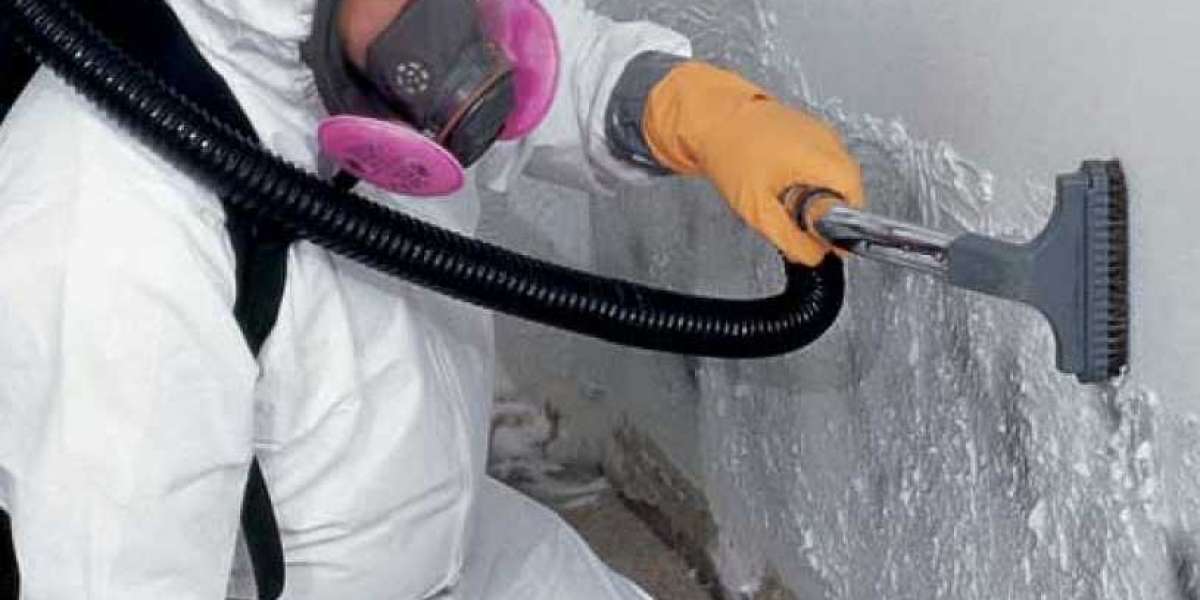Let’s be honest—choosing an air quality test kit isn’t exactly the kind of thing most people dream about. It’s not glamorous. It doesn’t sparkle. But if you’ve got allergies, weird smells, mystery health issues, or just a nagging feeling that something in your house isn’t quite right—then, yeah, air quality suddenly becomes a pretty big deal.
Problem is, the market is flooded with test kits that all claim to be “easy,” “accurate,” and “essential.” Spoiler alert: they’re not all created equal.
So how do you know which air quality test kit is worth your time and money?
Let’s break it down—real talk, no fluff. Here’s how to choose the right air quality testing home kit for your home, without wasting your money on techy junk or snake oil.
Why Indoor Air Quality Even Matters
Before we dive into the "how," let’s talk about why.
According to the EPA, indoor air can be 2 to 5 times more polluted than outdoor air. And the scary part? You can’t always see or smell it. Invisible pollutants like mold spores, volatile organic compounds (VOCs), radon, and particulate matter can seriously mess with your health.
Symptoms linked to poor air quality:
Headaches
Fatigue
Allergies
Brain fog
Asthma flare-ups
Sleep issues
Eye, nose, or throat irritation
Still not convinced? Try breathing in a mix of dust mites, paint fumes, mold spores, and CO2 for 12 hours a day and see how you feel.
Step 1: Understand Your Environment
The first thing you need to do is play detective. What’s going on in your home that’s making you think, “I need to test my air”?
Ask yourself:
Do you smell musty odors? → Might be mold.
Have there been any recent renovations? → Hello, VOCs.
Are you or your kids coughing/sneezing constantly indoors? → Dust, pet dander, PM2.5.
Is your home older? → Could be asbestos or radon.
Do you use a lot of air fresheners or cleaning sprays? → VOCs galore.
Live in a high-traffic area or near a factory? → Likely dealing with particulates.
Diagnosis before prescription. Know the problem, then choose the test kit.
Step 2: Know the Main Types of Air Quality Test Kits
There’s no one-size-fits-all kit that detects everything. You’ve got to choose based on what you want to test. Here's a breakdown:
1. Digital Air Quality Monitors
These are compact electronic devices that give real-time readings of things like:
PM2.5 and PM10 (fine particles)
CO2 or CO
VOCs
Temperature and humidity
Pros:
Fast, live data
Great for ongoing monitoring
Some connect to apps for tracking
Cons:
Can be pricey
May not detect mold, radon, or asbestos
Vary in accuracy (watch out for cheap ones!)
2. Mold Test Kits
These kits usually involve swabs, petri dishes, or air cassettes to collect spores. Some include lab analysis.
Pros:
Targeted detection
Affordable
Easy to use
Cons:
DIY kits can give false positives/negatives
Some require professional lab fees (read the fine print)
3. VOC Test Kits
These detect harmful chemicals from paints, furniture, adhesives, and cleaning supplies.
Pros:
Can identify dozens of chemicals
Useful for post-renovation
Cons:
Usually lab-based = slower results
Pricier than other kits
4. Radon Test Kits
Radon is a radioactive gas that seeps in from soil. It’s odorless and deadly over time.
Pros:
Inexpensive (short-term kits)
Long-term kits give better accuracy
Cons:
Need to mail results
Time-sensitive testing windows
5. Professional Testing Services
These involve specialists coming to your home for full assessments.
Pros:
Most accurate and comprehensive
Good for high-risk households or serious issues
Cons:
Can cost hundreds of dollars
Not always necessary for mild issues
Step 3: Match the Kit to Your Problem
Let’s match symptoms or situations to the type of test kit you probably need.
Symptom/Situation Best Kit Type
Persistent coughing, allergies Mold Test Kit + Digital Monitor
Strange chemical smells VOC Test Kit
Post-renovation worries VOC + Particulate Monitor
Basement smells musty Mold + Radon Test
Old home in radon zone Radon Test Kit
Smoggy area, lots of traffic PM2.5 Air Monitor
Multiple unexplained symptoms Pro Testing or Multi-Sensor Digital Kit
Pro tip: Go for a kit that detects at least three key pollutants: VOCs, PM2.5, and mold. That combo covers most indoor air threats.
Step 4: Set Your Budget (and Be Real About It)
Let’s not pretend you need to blow $500 on a NASA-grade air quality kit—unless you’re dealing with a severe health condition, newborns, or running a daycare.
Here’s what you can expect at different price points:
Budget What You Can Get
Under $50 Basic mold/radon test kits (usually require lab fees)
$50–$150 Decent single-pollutant digital monitors or combo kits
$150–$300 Quality monitors with multi-sensor detection (e.g. VOCs, PM2.5, CO2)
$300+ High-end, app-connected devices or pro services
? Avoid the temptation of super cheap kits with vague claims. “Test any toxin instantly” = red flag.
Step 5: Look for These Key Features
When comparing options, here’s your checklist:
Accuracy
Is the device calibrated?
Does it reference professional labs or certifications?
Sensors
Look for laser particle counters for PM2.5
VOC sensors should be metal-oxide or photoionization
Ease of Use
Simple setup? Clear instructions?
Does it require an app setup or just plug and play?
Data Tracking
Can you monitor trends over time?
Does it store or export data?
Lab Analysis (for physical kits)
Is the lab certified?
Are shipping costs included?
How long do results take?
Customer Reviews
Is it consistent? Do people trust the data?
Any sketchy patterns in negative reviews?
Top Air Quality Test Kits to Consider
Let’s name names. Based on reviews, expert recommendations, and actual reliability—not just marketing hype—here are some solid picks.
Digital Monitors:
Airthings Wave Plus – Best all-rounder (radon + VOC + CO2)
IQAir AirVisual Pro – Excellent real-time tracking, super accurate
Temtop M10i – Budget-friendly, reliable sensors
Lab Kits:
Home Air Check (by Prism Analytical) – Gold standard for VOCs
Mold Armor Do It Yourself Test Kit – Basic, budget-friendly mold test
First Alert RD1 Radon Test Kit – EPA-listed, accurate
Pro Services (if needed):
RTK Environmental Group
Mold Inspection Sciences
Certified radon mitigation companies (check local listings)
What If the Results Are Bad?
Here’s where the rubber meets the road. A test kit is only valuable if you do something about the results.
If You Detect Mold:
Clean small patches with vinegar or tea tree oil
Use dehumidifiers
For major issues, call a certified mold remediator
If VOCs Are High:
Ventilate immediately (open windows, use exhaust fans)
Remove synthetic materials or off-gassing furniture
Switch to non-toxic cleaning products
If Radon Is Detected:
Seal cracks in floors and foundations
Use a radon fan or mitigation system (professional job)
If CO2 or PM2.5 Is High:
Add air purifiers (HEPA filters + activated carbon)
Improve ventilation
Ban smoking indoors (seriously)
Common Mistakes to Avoid
Let’s save you some frustration. Here are the most common pitfalls people make when choosing an air quality test kit:
Buying the wrong type for their actual problem
Ignoring the results (don’t let the data collect dust)
Relying on one-time tests – Air quality fluctuates!
Falling for flashy features over actual accuracy
Using expired test kits – Yep, they can go bad
Assuming outdoor air is always cleaner – Not true, especially in urban zones
The Goal: Peace of Mind + Better Breathing
At the end of the day, you’re not buying a gadget—you’re buying insight. You’re investing in knowing what’s going into your lungs and how to make it better.
Sure, you could just assume your indoor air is fine. But if you’ve got unexplained health symptoms, a damp basement, an older home, or a bunch of new furniture off-gassing mystery chemicals—it might be time to stop guessing and start testing.
Final Thoughts: How to Choose the Right Air Quality Test Kit for Your Home
Let’s wrap this up with a quick checklist.
✅ Figure out what your potential air quality issue is
✅ Match the kit to your specific concern (mold, VOCs, radon, etc.)
✅ Decide on a digital monitor, lab test, or both
✅ Don’t cheap out—quality matters
✅ Read real reviews, not just Amazon hype
✅ Take action based on the results
Bottom line? You don’t need the fanciest kit—you need the right kit. Choose wisely, breathe better, and stop letting invisible toxins call the shots in your home.
Need help narrowing down a kit for your exact home setup? Tell me your symptoms or concerns and I’ll give you a custom rec—no fluff, no sales pitch.







